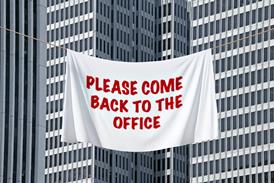Guideline hourly rates should rise by 18.25% to reflect price increases since the last review in 2010, claimant lawyers have said.
The Association of Personal Injury Lawyers said current rates now represent a ‘reasonable’ hourly rate for the work of fee-earners.
It said during the past three years, the retail price index has grown by 19.8% and the consumer prices index by 16.7%, justifying a hike in legal rates.
Guideline hourly rates for solicitors’ firms have remained substantially unchanged since 1 January 2009 when the advisory committee on civil costs recommended an increase of 1.7% as an interim measure.
In its response to the Civil Justice Council’s call for evidence on guideline hourly rates (GHRs), the association argued that any reduction in rates could harm the chances of clients gaining the redress they deserve.
‘With the current GHRs failing to take account of over four years of real-world inflation, keeping them at the same level or even reducing them would ultimately have access to justice implications as it will become increasingly difficult for consumers to find independent solicitors to take on their cases,’ said the response.
‘In addition, the practices which continue to survive may well be concentrated within large metropolitan areas leaving large advice deserts in rural areas and for those unable to travel.’
APIL said the cost of attracting cases has increased significantly in recent years to around £880 per case. It added that rates should not be industry specific and there should not be a separate set of rates for personal injury claims.
In its response, the City of London Law Society, which represents around 15,000 City lawyers, said the CJC’s survey reflected a ‘flawed approach’ to establishing solicitors’ reasonable charges and, further, that if this approach is carried through, it might ‘reduce the international attractiveness’ of litigation in England and Wales.
The society’s litigation committee said the CJC should seek to identify market rates for solicitors’ services to reflect what litigants actually pay, not setting its own rates based on a subjective view.
‘Having decided what it considers to be a proper figure for those direct costs, the CJC will then presumably decide how many hours solicitors should work and how much solicitors should earn, and use those figures to calculate the CJC’s hourly rates.
‘The CJC’s approach will not lead to its guideline rates reflecting market reality but rather to the CJC’s determining what, in its view, successful litigants should recover by way of costs.’
A decision is expected by April 2014.
























